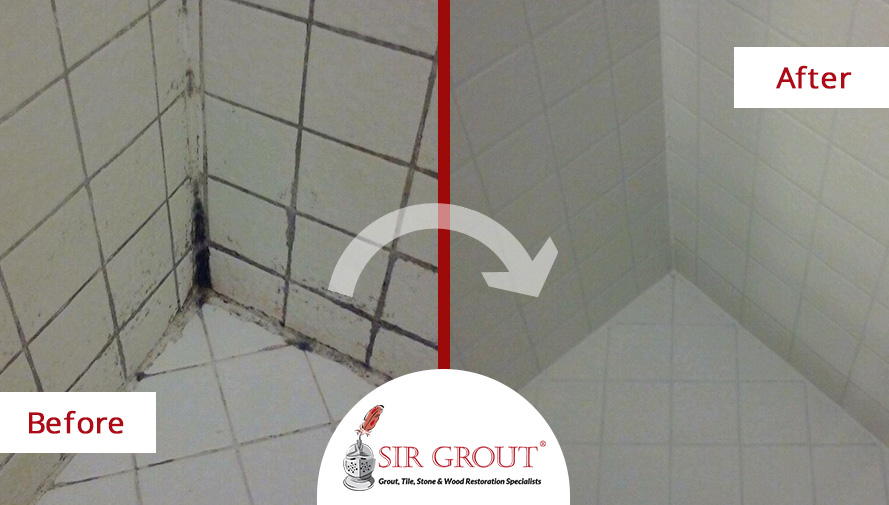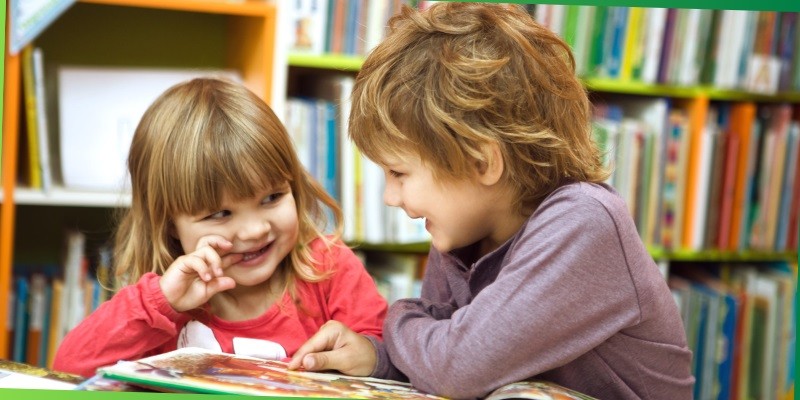Last Updated on January 15, 2025
To remove mold from grout, create a mixture of equal parts vinegar and water. Mold is a common issue that plagues many households, particularly in damp areas such as bathrooms and kitchens.
Not only is mold unsightly, but it can also pose health risks if left untreated. Therefore, it is crucial to address and eliminate mold as soon as possible. One effective and affordable method to remove mold from grout is by using a mixture of vinegar and water.
This natural solution not only kills the mold but also prevents it from regrowing. With just a few simple steps, you can say goodbye to mold and restore the cleanliness and hygiene of your grout.
The Impact Of Mold On Health And Hygiene
Mold can have a significant impact on both our health and hygiene. When it comes to removing mold from grout, there are several effective methods that can help combat this issue. Keeping your grout clean and mold-free is essential for maintaining a healthy living environment.
Health Risks Associated With Mold Exposure:
- Mold exposure can lead to a variety of health issues, especially for individuals with existing respiratory conditions or weakened immune systems.
- Breathing in mold spores can cause allergies, such as sneezing, coughing, and skin rashes.
- Prolonged exposure to mold can trigger asthma attacks or worsen symptoms in those already suffering from asthma.
- Mold has been linked to respiratory infections, sinusitis, and other upper respiratory tract symptoms.
- It can also cause allergic bronchopulmonary aspergillosis (ABPA), a condition characterized by coughing, wheezing, and chest tightness.
Negative Effects On Indoor Air Quality:
- Mold growth in grout can contaminate the air inside your home, leading to poor indoor air quality.
- Mold releases tiny spores that become airborne, and these spores can be inhaled or ingested, causing respiratory problems and other health issues.
- The musty odor associated with mold can permeate your living spaces and affect the overall freshness of the air.
- Mold can spread through ventilation systems, further compromising indoor air quality and potentially affecting the health of occupants.
Importance Of Maintaining A Clean And Mold-Free Environment:
- Regularly cleaning and removing mold from grout is essential for maintaining a healthy and hygienic living environment.
- Mold growth on grout can be indicative of excess moisture and humidity, which can also damage the structural integrity of the surrounding areas.
- Eliminating mold not only improves the appearance of your grout but also helps prevent further mold growth and potential health risks.
- Proper cleaning and maintenance practices can also prevent the spread of mold to other surfaces, reducing the need for costly repairs or replacements.
- Keeping a clean and mold-free environment promotes overall well-being and creates a safe space for you and your family.
Identifying Mold Growth In Grout
Grout mold can be detected by its dark, discolored appearance and musty odor. To remove mold from grout, scrub it with a mixture of bleach and water, or use a commercial mold remover. Regular cleaning and ventilation can help prevent future mold growth.
Common Signs Of Mold Growth In Grout:
- Discoloration: Mold growth in grout often leads to black, green, or brown stains on the surface. These discolorations can be a clear indication of mold presence.
- Foul odor: The presence of mold in grout can give off a musty or unpleasant smell. If you notice an unusual odor in your bathroom or kitchen, it could be a sign of mold growth.
- Texture changes: Mold-infested grout may feel slimy or damp to the touch. If the texture of your grout has changed and appears wet or sticky, it’s worth investigating for mold.
Importance Of Early Detection:
- Health concerns: Mold can have adverse effects on human health, including respiratory issues, allergies, and skin irritations. Detecting mold early helps prevent potential health problems for you and your family.
- Structural damage: If left untreated, mold growth in grout can damage the grout and underlying surfaces, such as tiles and walls. Early detection allows for timely intervention, preventing costly repairs in the future.
- Spreading prevention: Mold spreads quickly and easily. Identifying mold growth early on helps contain the issue, preventing it from spreading to other areas of your home.
Diy Methods To Identify Mold In Grout:
- Visual inspection: Carefully examine the grout lines for any discoloration, dark spots, or unusual growth. Use a flashlight to check areas that may be less visible.
- Smell test: Take a deep breath near the grout lines and see if you detect any musty or unpleasant odors. A strong odor may indicate mold.
- Tape test: Use transparent tape to collect a sample from the grout surface. Press the tape firmly onto the grout, then carefully peel it off. If you observe mold-like particles on the tape, it’s a sign of mold growth.
- Bleach test: Create a mixture of equal parts bleach and water. Apply the solution to a small section of the grout using a cotton swab. If the grout lightens in color within a few minutes, it could be due to mold.
Identifying mold growth in grout is crucial for maintaining a safe and healthy environment in your home. By recognizing common signs and implementing simple DIY methods, you can quickly detect mold and take appropriate measures to remove it effectively.
Preparing For Mold Removal
To remove mold from grout, follow these simple steps: mix equal parts hydrogen peroxide and water, apply the mixture to the affected area, scrub with a brush, rinse thoroughly, and dry the grout completely. Regularly cleaning and maintaining your grout will help prevent future mold growth.
Before you begin the process of removing mold from grout, it is important to prepare properly. Taking the necessary steps to gather supplies, ensure proper ventilation, and take safety precautions will contribute to a successful and safe mold removal process.
Gathering Necessary Supplies
To effectively remove mold from grout, it is essential to gather the following supplies before starting the process:
- Protective attire: Wear gloves, goggles, and a mask to keep yourself safe from mold spores and cleaning chemicals.
- Cleaning solution: Look for a mold and mildew cleaner or create your own solution using one part vinegar to one part water or a bleach-water solution (1 cup of bleach mixed with 1 gallon of water).
- Scrub brush: Use a stiff-bristled brush to scrub away the mold from the grout lines.
- Toothbrush: An old toothbrush can be useful for reaching tight corners and crevices.
- Cloth or sponge: Use a cloth or sponge to wipe away excess moisture and residue from the cleaning process.
- Bucket: Fill a bucket with warm water to rinse off the cleaning solution.
- Ventilation: Open windows or use a fan to ensure proper air circulation while cleaning.
Ensuring Proper Ventilation
Good ventilation is crucial when removing mold from grout as it helps to prevent the spread of mold spores and promotes faster drying. Follow these steps to ensure proper ventilation during the mold removal process:
- Open windows: If the weather permits, open windows in the affected area to allow fresh air to circulate.
- Use fans: Place fans strategically to help circulate air and create cross-ventilation in the space where you are working.
- Ventilation systems: Ensure the ventilation systems, such as exhaust fans, are turned on to improve air circulation and remove any airborne mold spores.
- Dehumidifier: Consider using a dehumidifier in the room to help reduce moisture levels during and after mold removal.
Taking Safety Precautions
When dealing with mold, it is important to prioritize safety. Follow these safety precautions to avoid potential health risks:
- Wear protective gear: Always wear gloves, goggles, and a mask to protect yourself from mold spores and cleaning chemicals.
- Work in a well-ventilated area: Ensure there is enough fresh air circulation while working on mold removal.
- Avoid direct contact with mold: Minimize direct contact with mold to prevent exposure. Use tools like gloves, brushes, or toothbrushes to scrub away mold from grout.
- Do not mix cleaning agents: Avoid mixing cleaning agents such as bleach and ammonia, as this can create harmful fumes.
- Dispose of contaminated materials properly: Seal any moldy or contaminated materials in a plastic bag before disposing of them to prevent the spread of mold spores.
By adequately preparing for mold removal through gathering necessary supplies, ensuring proper ventilation, and taking safety precautions, you are now ready to tackle the process of removing mold from grout effectively and safely.
Natural Remedies For Mold Removal
Discover effective natural remedies to remove mold from grout. Say goodbye to harmful chemicals and try these safe and eco-friendly solutions for a healthier environment. Easily tackle mold growth and keep your grout clean and fresh with these tips.
Mold growth in grout can be a frustrating problem to deal with. Instead of using chemical-laden products, why not try natural remedies for effective mold removal? Here are some eco-friendly solutions that can help get rid of mold from grout:
Vinegar And Baking Soda Solution:
- Create a paste by mixing vinegar and baking soda.
- Apply the paste onto the moldy grout and let it sit for at least 30 minutes.
- Scrub the grout with a brush or sponge, paying extra attention to the affected areas.
- Rinse the grout with water to remove any residue.
Lemon Juice And Hydrogen Peroxide Mixture:
- Mix equal parts of lemon juice and hydrogen peroxide in a spray bottle.
- Spray the mixture onto the mold-infested grout and let it sit for about 15 minutes.
- Scrub the grout with a brush or sponge, ensuring all mold is thoroughly removed.
- Rinse the grout with water to eliminate any remaining solution.
Tea Tree Oil And Water Spray:
- Dilute tea tree oil with water, using a ratio of 1 teaspoon of oil per cup of water.
- Pour the mixture into a spray bottle and shake well to combine.
- Spray the solution onto the moldy grout, making sure to cover the entire affected area.
- Let it sit for a few hours before scrubbing the grout with a brush or sponge.
- Rinse the grout with water to remove any leftover residue.
These natural remedies are not only effective in removing mold from grout but also safe for the environment. Give them a try and say goodbye to mold without the use of harmful chemicals. Remember, regular maintenance and proper ventilation can prevent mold growth in the future.
Commercial Products For Mold Removal
To remove mold from grout, consider using commercial products designed specifically for mold removal. These specialized products can effectively eliminate mold and prevent its regrowth, restoring the cleanliness and freshness of your grout. Give your grout a thorough cleaning and treatment to ensure a mold-free environment.
Mold removal sprays and cleaners can be an effective solution for combating mold in your grout. These products are specifically designed to eliminate mold and prevent its regrowth. When choosing a commercial product for mold removal, consider the following:
- Active ingredients: Look for products that contain ingredients like hydrogen peroxide, bleach, or vinegar. These substances have powerful mold-killing properties.
- Safety precautions: Read the label carefully to understand any safety precautions you need to take. Ensure that the product is safe to use on your specific grout material.
- Effectiveness: Consider the product’s track record for removing mold. Look for reviews or recommendations from other homeowners or professionals.
- Ease of use: Opt for products that are convenient to use and apply. Some come in spray bottles, while others may require mixing or dilution.
- Compatibility with your grout: Different products may be more suitable for certain types of grout. Ensure that the product you choose is compatible with your specific grout material.
When using commercial mold removal products, it’s vital to adhere to the manufacturer’s instructions. This will ensure the product’s optimal efficiency and help you achieve the best results.

Credit: www.sirgrout.com
Maintaining Proper Ventilation
Maintain proper ventilation to prevent mold growth on grout. Use exhaust fans, open windows, and dehumidifiers to keep air circulating and reduce moisture levels. Regularly clean and disinfect grout to remove existing mold and prevent its recurrence.
Importance Of Airflow In Preventing Mold Growth:
Maintaining proper ventilation is crucial in preventing mold growth in grout. When there is no adequate airflow, moisture accumulates, providing an ideal environment for mold to thrive. Here are some ways to ensure proper ventilation:
- Installing exhaust fans: Consider installing exhaust fans in areas prone to moisture, such as bathrooms and kitchens. These fans help remove humid air and prevent excess moisture from settling on the grout.
- Opening windows and doors regularly: Opening windows and doors allows fresh air to circulate, reducing moisture levels. Aim to do this at least once a day, especially after activities like showering or cooking that generate moisture.
Installing Exhaust Fans:
- Exhaust fans are an effective way to maintain proper ventilation and prevent mold growth in grout.
- Place exhaust fans in areas with high humidity, such as bathrooms, laundry rooms, and kitchens.
- Make sure to install fans that are appropriately sized for the area they will be ventilating.
- Turn on the exhaust fans during and after activities that generate moisture, like taking a shower or cooking.
- Routinely clean and maintain the fans to ensure they function optimally.
Opening Windows And Doors Regularly:
- Regularly opening windows and doors is another way to promote airflow and prevent mold growth in grout.
- Open windows and doors for at least 10-15 minutes each day, allowing fresh air to circulate throughout the space.
- Consider using window screens to prevent insects from entering while still allowing air to flow.
- If weather conditions permit, leave windows slightly open overnight to increase air exchange and reduce humidity.
- Ensure all doors in the space are open to facilitate airflow throughout the entire area.
By implementing these measures, you can significantly reduce the risk of mold growth on grout by maintaining proper ventilation. Adequate airflow helps keep moisture levels in check, minimizing the conditions that mold thrives in. Remember to regularly clean and inspect the grout to identify and address any signs of mold growth promptly.
Regular Cleaning And Maintenance
Regular cleaning and maintenance are essential for removing mold from grout. With simple steps and proper cleaning products, mold can be eliminated, ensuring a clean and healthy environment.
Establishing A Cleaning Routine
Maintaining a regular cleaning routine is crucial for preventing mold growth in grout. By incorporating these simple habits into your cleaning routine, you can keep your grout mold-free and pristine:
- Wipe down your grout after each use: After showering or using the bathroom, take a few moments to wipe down the grout with a clean cloth or squeegee. This will prevent moisture from seeping into the grout and creating a favorable environment for mold to grow.
- Ventilate the area: Proper ventilation is essential in preventing mold growth. Make sure your bathroom or kitchen is well-ventilated by using exhaust fans or opening windows to allow air circulation. This helps to reduce humidity and prevent moisture buildup.
- Use a mildew-resistant shower curtain: Opt for a shower curtain that is specifically designed to resist mildew and mold. These curtains are treated with special coatings that inhibit mold growth, keeping your grout cleaner for longer.
- Keep surfaces dry: After cleaning your grout, make sure to dry it thoroughly. Moisture left behind can encourage mold growth. Use a dry towel or allow sufficient time for the grout to air dry completely before closing off the area.
Using Effective Cleaning Agents
When it comes to tackling mold on grout, using the right cleaning agents is essential. Here are some effective cleaning agents and techniques you can employ to eliminate mold from your grout:
- Vinegar solution: Create a mixture of equal parts white vinegar and water. Apply the solution to the moldy grout and let it sit for about 15 minutes. Scrub the grout with a soft brush or toothbrush, then rinse with water. Vinegar’s acidic properties help kill mold and prevent future growth.
- Hydrogen peroxide: Another powerful mold-fighting agent is hydrogen peroxide. Apply 3% hydrogen peroxide directly to the affected grout and leave it for 10-15 minutes. Scrub the grout gently with a brush and rinse with water. Be sure to test hydrogen peroxide on a small area first, as it may discolor certain types of grout.
- Bleach solution: For stubborn mold stains, a diluted bleach solution may be necessary. Mix one part bleach with four parts water and apply it to the grout. Allow it to sit for 15 minutes, then scrub the grout using a brush. Rinse thoroughly with water afterward. Note that bleach should be used sparingly and only on non-porous grout to avoid discoloration.
- Commercial mold removers: There are also various commercial mold removers available in the market that are specifically formulated to tackle mold on grout. These products often come in spray bottles, making the application process quick and convenient. Follow the instructions provided by the manufacturer for the best results.
Inspecting And Repairing Grout
Regular inspection and repair of grout is essential to prevent mold growth and maintain a healthy environment. Here are some important points to consider:
- Inspect grout regularly: Take the time to inspect your grout periodically, looking for any signs of mold growth. Pay close attention to areas with high moisture levels such as showers, tubs, and sinks.
- Repair damaged grout: If you notice any cracked or damaged grout, it’s crucial to repair it promptly. Damaged grout provides a perfect breeding ground for mold, as it allows water and moisture to seep into the walls or floors. Remove the damaged grout and replace it with fresh grout, ensuring a tight seal.
- Apply grout sealer: Applying a grout sealer can significantly reduce the risk of mold growth. Sealing the grout creates a protective barrier that prevents water and moisture from penetrating and causing mold. Follow the manufacturer’s instructions to properly seal your grout.
By establishing a cleaning routine, using effective cleaning agents, and regularly inspecting and repairing grout, you can effectively remove mold and maintain clean, mold-free grout surfaces in your home.
Controlling Moisture Levels
To remove mold from grout, controlling moisture levels is key. By ensuring proper ventilation and minimizing water accumulation, you can prevent mold growth and maintain a mold-free grout surface.
Excessive moisture can create the perfect breeding ground for mold growth. To effectively remove mold from grout and prevent its future growth, it is crucial to control the moisture levels in your home. Here are some essential steps to take:
Identifying And Fixing Water Leaks:
- Regularly inspect your plumbing system for leaks. Check for any signs of water damage, such as water stains or dampness on ceilings, walls, or floors.
- Fix any identified leaks promptly to prevent moisture from seeping into your grout and causing mold growth.
- Replace damaged or deteriorating grout to eliminate potential entry points for moisture.
Properly Waterproofing Areas Prone To Moisture:
- Apply a waterproof sealant to grout lines in areas such as bathrooms, kitchens, and other spaces exposed to moisture regularly. This will help prevent water from penetrating the grout and creating an ideal environment for mold.
- Consider using waterproofing membranes or coatings on walls and floors. These products create an additional layer of protection against moisture.
Using Dehumidifiers In Damp Spaces:
- Place dehumidifiers in areas with high humidity levels, such as basements, bathrooms, and laundry rooms. These devices help reduce excess moisture in the air, making it harder for mold to thrive.
- Set your dehumidifier to maintain a humidity level between 40% and 50% to prevent mold growth.
- Empty and clean your dehumidifier regularly to ensure it functions optimally.
Remember, mold thrives in moist environments, so it’s crucial to control moisture levels to prevent its growth. By promptly fixing water leaks, properly waterproofing susceptible areas, and using dehumidifiers in damp spaces, you’ll significantly reduce the risk of mold developing on your grout.
Frequently Asked Questions For How To Remove Mold From Grout?
How Do You Get Black Mold Out Of Shower Grout?
To remove black mold from shower grout effectively: 1. Scrub the affected areas using a mixture of equal parts water and white vinegar. 2. Apply the solution to the grout using a scrub brush or toothbrush, focusing on the moldy spots.
3. Let the vinegar solution sit on the grout for at least 30 minutes. 4. Scrub vigorously to remove the mold. 5. Rinse the grout thoroughly with water to remove any remaining vinegar. 6. For stubborn mold, mix baking soda with water to form a paste, then apply it to the grout.
7. Let the paste sit for a few minutes, then scrub and rinse. 8. After removing the mold, prevent its regrowth by ensuring proper ventilation in the bathroom. 9. Regularly clean and dry the shower area to avoid moisture buildup.
10. Consider using a mold-resistant shower cleaner to maintain a mold-free shower grout.
How Do You Remove Mold From Grout Permanently?
To permanently remove mold from grout: 1. Mix a solution of equal parts hydrogen peroxide and water. 2. Apply the solution to the moldy grout and let it sit for 15 minutes. 3. Scrub the grout with a stiff-bristle brush to remove the mold.
4. Rinse the grout with clean water and wipe it dry. 5. If the mold persists, repeat the process or try using vinegar instead of hydrogen peroxide. 6. Ensure proper ventilation in the area to prevent future mold growth. 7.
Regularly clean the grout using a mixture of water and mild detergent to prevent mold from returning. Remember to wear protective gloves and ventilation masks when dealing with mold.
How Do You Remove Black Mold From Grout Naturally?
To naturally remove black mold from grout, mix equal parts of vinegar and water in a spray bottle. Spray the mixture onto the affected areas and leave it on for about 30 minutes. Scrub the grout with a brush or a toothbrush to remove the mold.
Rinse the area with warm water and wipe it dry. Alternatively, you can make a paste with baking soda and water, apply it to the moldy grout, and let it sit for a few hours. Scrub the grout with a brush and rinse it off.
Keep the area well-ventilated to prevent mold growth. Regularly clean and maintain the grout to prevent future mold problems.
What Is The Best Thing To Clean Moldy Grout With?
The best thing to clean moldy grout is a mixture of baking soda and vinegar. Apply the paste to the grout, scrub with a brush, and let it sit for 15 minutes. Rinse with warm water and repeat if necessary.
Oxygen bleach is also effective, but make sure to follow the instructions carefully. Another option is a hydrogen peroxide solution, which can kill the mold and lighten the stains. For stubborn stains, use a grout cleaner that contains bleach or hydrogen peroxide.
Regular cleaning and ventilation will help prevent mold from growing in the future.
Conclusion
Removing mold from grout is a crucial step in maintaining a healthy and clean environment in your home. By following the simple yet effective methods discussed in this blog post, you can effectively eliminate mold from your grout lines. Remember to start by protecting yourself with appropriate safety measures such as gloves and a face mask.
Then, use a combination of natural solutions like vinegar or hydrogen peroxide, along with scrubbing tools, to carefully clean the affected areas. Afterward, make it a habit to keep your grout dry and well-ventilated to prevent mold from recurring. Regular maintenance and cleaning will go a long way in ensuring mold-free grout and a fresh living space.
So don’t let mold ruin the appearance and health of your grout – take action today and enjoy a mold-free environment!










